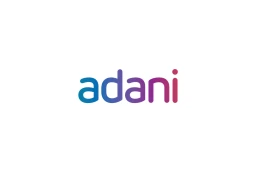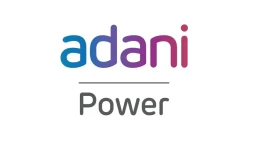Nifty 50 vs Nifty Total Market: Analysis
Since its inception, Nifty 50 has been a cornerstone of the Indian stock market, often serving as a barometer of market trends and investor sentiment. However, it's not the sole player in town. Other indices, such as the Nifty Total Market Index, offer a broader perspective. While Nifty 50 captures the top 50 companies by market capitalization, the Nifty Total Market Index takes a more comprehensive approach, encompassing the top 750 companies across large-cap, mid-cap, and small-cap segments. In this comparative analysis, we delve into the dynamics of Nifty 50 vs Nifty Total Market, examining how these indices stack up against each other.
Shared Constituents, Divergent Weightages
Both Nifty 50 and Nifty Total Market share certain constituent companies, given their market capitalization-based selection criteria. Nifty 50 comprises the 50 largest Indian companies, a subset included in the top 750 companies of Nifty Total Market. However, each index assigns different weightages to these shared companies. In the breakdown below, we analyze the top ten constituents of both indices based on their respective weightages.
Top Constituents of the Nifty 50 by Weightage
Company’s Name | Weight in Nifty 50 (%) | Weight in Nifty Total Market (%) |
HDFC Bank Ltd. | 13.77 | 8.52 |
Reliance Industries Ltd. | 9.56 | 5.92 |
ICICI Bank Ltd. | 7.87 | 4.87 |
Infosys Ltd. | 6.01 | 3.72 |
ITC Ltd. | 4.55 | 2.82 |
Tata Consultancy Services Ltd. | 4.04 | 2.50 |
Larsen & Toubro Ltd. | 3.84 | 2.37 |
Axis Bank Ltd. | 3.13 | 1.94 |
Kotak Mahindra Bank Ltd. | 3.04 | 1.88 |
Hindustan Unilever Ltd. | 2.63 | 1.63 |
Nifty 50 vs Nifty Total Market Representation and Coverage
Nifty 50 encompasses 62% of the National Stock Exchange's total free float market capitalization as of September 30, 2022. In contrast, the Nifty Total Market Index extends its coverage to include all stocks from the Nifty 500 and Nifty Microcap 250 indices, offering a more comprehensive representation. Unlike Nifty 50, which focuses solely on large-cap stocks, the Total Market Index spans the entire spectrum from large-caps to microcaps, promoting sectoral diversity. While Nifty 50 emphasizes financial services and IT, the Total Market Index provides a more diversified portfolio.
Sector Weightage (%) in Nifty 50
Sector | Weight (%) |
Financial Services | 37.00 |
Information Technology | 13.66 |
Oil, Gas & Consumable Fuels | 11.35 |
Fast Moving Consumer Goods | 9.30 |
Automobile and Auto Components | 6.05 |
Healthcare | 4.09 |
Construction | 3.84 |
Metals & Mining | 3.70 |
Consumer Durables | 3.24 |
Telecommunication | 2.52 |
Power | 2.21 |
Construction Materials | 1.90 |
Services | 0.78 |
Chemicals | 0.35 |
Sector Weightage (%) in Nifty Total Market
Sector | Weight (%) |
Financial Services | 30.56 |
Information Technology | 10.06 |
Oil, Gas & Consumable Fuels | 8.34 |
Fast Moving Consumer Goods | 8.05 |
Automobile and Auto Components | 6.22 |
Healthcare | 5.59 |
Capital Goods | 5.31 |
Consumer Durables | 3.72 |
Metals & Mining | 3.29 |
Construction | 2.95 |
Power | 2.74 |
Chemicals | 2.73 |
Consumer Services | 2.59 |
Construction Materials | 2.19 |
Telecommunication | 2.06 |
Services | 1.48 |
Realty | 0.97 |
Textiles | 0.53 |
Media, Entertainment & Publication | 0.41 |
Diversified | 0.13 |
Forest Materials | 0.07 |
Utilities | 0.02 |

Evaluating Growth Patterns
Both Nifty 50 and Nifty Total Market have demonstrated robust historical growth. Since inception, Nifty 50 has exhibited a steady average annual price growth of 11.21%, while Nifty Total Market has experienced a slightly higher growth rate at approximately 12.99%. Now, let's delve into a more detailed examination of their growth metrics.
Timeframe | Price Return (%) | Total Return (%) |
Since Inception | 12.99 | 14.54 |
1 Year | 11.37 | 12.35 |
5 Years | 11.32 | 12.54 |
Nifty Total Market Index Performance
Timeframe | Price Return (%) | Total Return (%) |
Since Inception | 11.21 | |
1 Year | 8.42 | 9.53 |
5 Years | 10.51 | 11.84 |
Nifty 50 Index Performance
It's crucial to note that the growth observed in both Nifty 50 and Nifty Total Market is far from linear. The stock market, notorious for its volatility, manifests this in the price action of these indices. Fluctuations, be they upward or downward, are inherent.
Illustrating this, during the tumultuous COVID-19 crisis, the stock market witnessed a significant downturn. Nifty 50, in particular, encountered a substantial setback, plummeting to 1,135.20 points, reflecting a notable 12.98% decrease. This downturn culminated in the index closing at 7,610.25 points, marking one of its most challenging performances in history.
Also read: Best Real Estate Stocks in India
Comparing Nifty 50 and Nifty Total Market Index
Let's now delve into a detailed comparison of the Nifty Total Market Index and Nifty 50.
Features | Nifty Total Market Index | Nifty 50 |
TR Index Returns (1 year) | 18.45% | 15.90% |
TR Index Returns (3 years) | 24.71% | 21.81% |
TR Index Returns (5 years) | 15.13% | 13.74% |
TR Index Returns (10 years) | 16.33% | 14.46% |
TR Index Returns (15 years) | 13.79% | 12.67% |
Stock Count | 750 | 50 |
Sectoral Representation | Diverse across multiple sectors | Mainly top-performing sectors |
Company Size Representation | Large-cap, mid-cap, small-cap and micro-cap | Primarily large-cap |
Weightage Criteria | Free float market capitalisation | Free float market capitalisation |
Objective | Broad market exposure | Representing top 50 stocks by market cap |
Insights for Investors
Understanding Indices as Market Snapshots: Both Nifty Total Market and Nifty 50 serve as windows into the Indian stock market for investors.
Nifty Total Market for Comprehensive Diversification: Nifty Total Market offers a panoramic view, encompassing companies of all sizes and diverse sectors. This index suits a highly diversified strategy, spanning various market caps and sectors.
Nifty 50's Focus on Market Giants: In contrast, Nifty 50 concentrates solely on large caps—major players in the Indian stock market and pivotal market influencers.
Tailoring Choices to Investor Objectives: Investors' choices hinge on their objectives. For those seeking a comprehensive overview, the Nifty Total Market Index is ideal. Conversely, investors aiming for a representative sample may find Nifty 50 more suitable.
Also read: Top Home loans in India 2023
The Bottom Line
Since their inception, both Nifty Total Market and Nifty 50 have become integral indicators of stock market dynamics. Regardless of whether you prioritize broad exposure or focus on top players, the key lies in aligning your investment goals with the appropriate index.
Follow us on Instagram.









